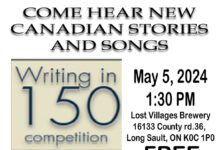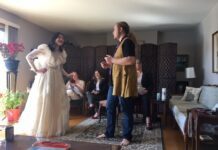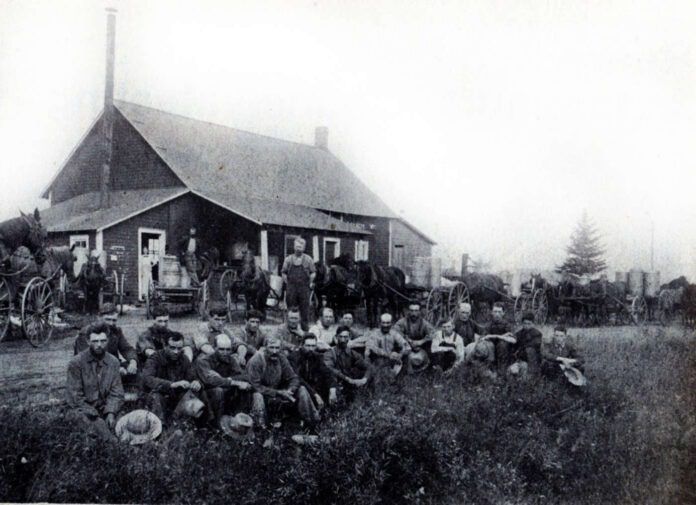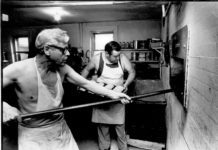This is our annual Heritage Week issue of the Times, and we are featuring a range of articles, photographs and ads to celebrate the topic. We usually think of heritage and history as something to do with the past: we think of them as “what has gone before”. Heritage brings to mind museums and archives and documentaries on CBC. I remember, when I was teaching Canadian History to second-year students in university, there was always a barrier to get over early in the term. That barrier was the assumption among many students that Canadian history was boring, dull, not as exciting as the history of other countries, mostly because we didn’t have revolutions, civil wars, and political scandals.
None of that is true, in fact, but there is a lingering idea that history and heritage are not really about “normal people”, not part of our daily lives. But, in reality, heritage is us: it is who we are and where we live, and how we got here. North Grenville is the inheritance we received from the people of Oxford-on-Rideau, South Gower and the Village of Kemptville. The roads we travel as we move from home to store to work and church were laid down by those who lived here before us. In the same way, the roads we build (four-laned CR 43, the 416) and the streets we lay out in our new subdivisions, will be our legacy to future generations (whatever they think of them!).
The new buildings we erect, and the old buildings we demolish, are also the future heritage of our children. I wonder will they want to make books of photographs showing what we have built and bequeathed to them, as we enjoy looking at the old pictures in this issue? I wish I could be sure. History is not just what we read about previous generations, it is also what we are writing in our daily lives for those who come after us. Their heritage is what we decide to make of this community in our lifetimes. Will they thank us for what we leave them?
But we can go further, both back in time, and forward too. Before the old buildings and fairs in these old photographs, there were others who lived on this land, people who maybe knew better than we do just how to live in a sustainable relationship with the land. The Algonquin, the St. Lawrence Iroquoian, the Mohawk and Mississauga peoples knew this land too, and we have inherited it from them. Some of the roads we travel along in North Grenville and Merrickville-Wolford were built on trails the aboriginal peoples followed through the forests. These same forests that we cut down to build our wooden homes and fences and barns. It is all part of out heritage, our common history.
Heritage is also expressed in our old buildings in a way that illustrates our history. Looking at the oldest buildings around here, and then tracing the way in which later generations moved from wood to stone, how they decorated the outside of their homes, and even how they changed the shape and location of windows, all of this tells us something about them, their desire to make their work unique, beautiful even. Things made with hands, the work of craftspeople, of settlers and householders who wanted to live in a place that was specifically theirs: all of this is so far removed from much of our contemporary architecture and planning.
Do we still want beauty in everyday things? Are we content to have a house that looks just like everyone else’s in the neighbourhood? Do we even have a choice? Municipal regulations in some places now tell home owners whether they can paint their front doors a certain colour, or even how long the grass in their front garden can be. What a strange attitude to life. Is this to be our children’s heritage from us, or can we find our way to pass along beauty, design, individuality to them?
All of this is an expression of who we are, what we care about, what we value, where we want to go as a community. That is why we need to know our common story, why we need to value our heritage and history: so that we have a sense of being part of an older, on-going story. In this age of rootlessness and sliding values and mores, perhaps we need to get grounded in the past too, to know our place in the river that is our story together. Perhaps, if we do, we’ll be more careful about where that river goes next, and what kind of story our children tell about us and our times.
There has been a past, and we pray there will be a future. We are the link between them in our time. That may sound rather grandiose and presumptuous, but it is a fact of which we should be aware. To go back to the First Nations and what they taught us (but we fail to listen): we do not own the land, we are simply custodians of it, passing it on from our forebears to our children’s children. Understanding that can change everything: from how we plan our gardens to how we plan our communities. It can help us decide which buildings we demolish, and which we maintain at whatever cost. That is the meaning of heritage, and that is what it means to be part of history.








